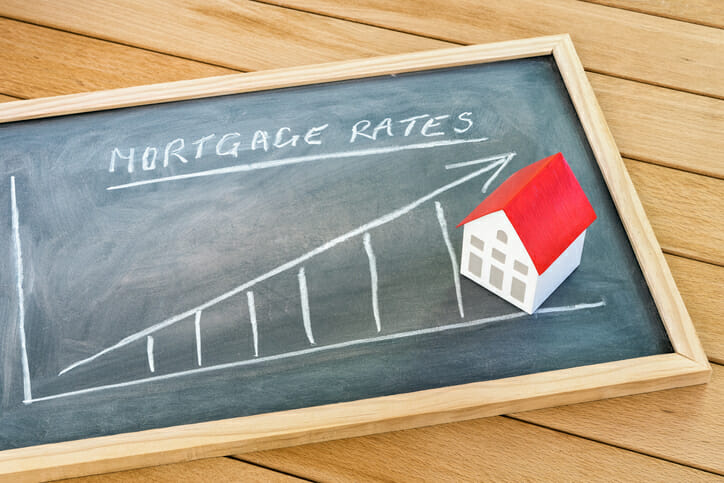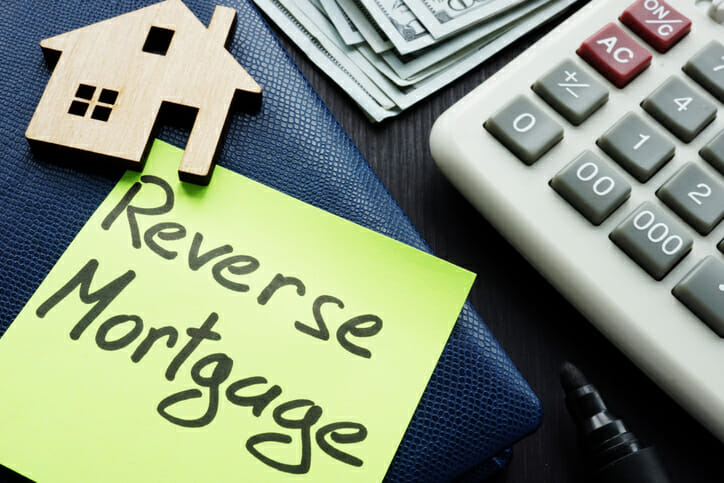Reverse mortgages are designed to help eligible homeowners turn their home equity into income for retirement. Unlike a home equity line or line of credit (HELOC), a reverse mortgage doesn’t require monthly payments as long as the homeowner is using the property as their primary residence. That doesn’t mean that reverse mortgages are free money, however. Understanding the cost of reverse mortgage borrowing can help you decide if it makes sense for you.
A financial advisor can help create a financial plan for your retirement needs and goals.
What Is a Reverse Mortgage and How Does It Work?
A reverse mortgage is a financial arrangement that allows homeowners to withdraw equity from their homes. Equity can be received as a lump sum, a series of installment payments or a combination of the two. The homeowner can then use that money as they see fit.
This sounds similar to a home equity loan or HELOC but there’s one key difference. Homeowners do not make monthly loan payments to a reverse mortgage as long as they’re living in the home.
If the homeowner sells the property, moves out or passes away, the balance becomes payable. There are some exceptions to this rule if the homeowner has a Home Equity Conversion Mortgage (HECM). A HECM is a reverse mortgage that’s backed by the federal government through the Department of Housing and Urban Development (HUD).
HUD rules allow co-borrowers and eligible non-borrower spouses to remain in the home if the primary borrower moves out or passes away, without any obligation to repay the reverse mortgage. So if your spouse has to move into long-term care permanently, for example, you could still remain in the home and not have to pay the reverse mortgage balance if you’re a co-borrower or an eligible non-borrower spouse.
If all the borrowers on a reverse mortgage pass away or leave the home permanently, payment is due. So if you inherit a home from your parents that has a reverse mortgage, you’d have to pay off the balance in order to keep the property. Otherwise, you could sell the home and use the proceeds to clear the balance.
Upfront Cost of Reverse Mortgage Borrowing
When a homeowner decides to get a reverse mortgage, there are two categories of costs they’ll pay: upfront expenses and ongoing expenses. In terms of what you’ll pay beforehand for a reverse mortgage, the costs include:
- Consumer counseling fees. HUD requires consumer counseling before a Home Equity Conversion Mortgage can be completed. This fee is usually around $125, though HUD does give counselors leeway in establishing fees that are fair and reasonable.
- Home appraisal fees. Since you’re leveraging your equity with a reverse mortgage, the reverse mortgage lender needs an accurate estimate of the home’s value. As the homeowner, you’re required to pay the appraisal fee. This fee is typically in the $500 range, though what you’ll pay can depend on the size and age of the home.
- Closing costs. Reverse mortgages have closing costs just like any other type of home loan. Closing costs include all the amounts you pay for things like title insurance, credit checks and attorneys’ fees. Closing costs usually range from 2% to 5% of the loan amount.
- Initial Mortgage Insurance Premium (MIP). If you’re getting a HECM, you’ll have to pay an upfront mortgage insurance premium. The initial MIP is 2% and you can pay this as part of your closing costs or finance it into your loan.
- Origination fee. An origination fee is a fee you pay simply to get the loan. With HECMs, lenders can charge the greater of $2,500 or 2% of the first $200,000 of the home’s value, plus 1% of the amount in excess of $200,000. HUD does cap origination fees at $6,000.
Rolling fees into your reverse mortgage means less cash you have to part with upfront. But it can increase the overall cost of a reverse mortgage over time since interest accrues on those amounts.
Ongoing Cost of Reverse Mortgage Financing

Once you have a reverse mortgage, there are other fees and costs that come into play. Those include:
- Interest. Reverse mortgages can have fixed or variable rates. The rate you qualify for can depend largely on your creditworthiness. As with other mortgage loans, a higher credit score can translate to a lower, more favorable interest rate.
- Annual Mortgage Insurance Premiums. If you have a HECM, you’ll be charged an annual MIP. This premium is equal to 0.5% of the mortgage balance.
- Servicing fees. Reverse mortgage lenders may charge a service fee over the life of a HECM. This fee is designed to cover things like paper statements and making sure you keep up with certain loan requirements. The max fee allowed is $30 if you have a fixed interest rate or a rate that adjusts annually. The fee increases to $35 if your interest rate adjusts monthly. This fee gets added to your loan balance or it can be built into your interest rate.
Again, if you’re living in the home and are listed as a borrower on the reverse mortgage you won’t pay anything directly. These costs all get added in to the reverse mortgage balance that’s due when you move, sell the home or pass away.
There are, however, other costs you will be responsible for while you’re living in the property. For example, you’ll need to pay your regular homeowner’s insurance premiums and property taxes. You’ll also need to pay your HOA fees if applicable. And you’ll be responsible for regular maintenance and upkeep of the home.
Is a Reverse Mortgage a Good Idea?
A reverse mortgage can be appealing to homeowners who want to create a supplemental stream of income in retirement. You can use the money to pay for day-to-day living expenses, medical care, home improvements or just about anything else. And since no monthly payments are required, you’re not placing any additional strain on your budget.
Of course, you do have to qualify for a reverse mortgage first. To get a HECM, for example, you must:
- Be 62 or older
- Own your home outright or have paid down most of the mortgage
- Not be delinquent on any federal debt
- Live in the home and use as a primary residence
- Have sufficient resources to pay for homeowner’s insurance, property taxes, maintenance and repairs
- Attend HUD-approved counseling
The larger the balance and the longer you have a reverse mortgage, the more interest and fees can accrue. That could mean more for your heirs to pay off later. You may want to talk to an estate planning attorney about the implications of a reverse mortgage for your loved ones.
Bottom Line

The cost of reverse mortgage borrowing could be substantial, depending on how much you pay for mortgage insurance premiums, closing costs and servicing fees. But it may be a small price to pay to have reliable income for retirement. Looking at both sides of the equation can help you decide if getting a reverse mortgage makes sense.
Mortgage Planning Tips
- Consider talking to your financial advisor about whether a reverse mortgage makes sense for your situation. If you don’t have a financial advisor yet, finding one doesn’t have to be difficult. SmartAsset’s free tool matches you with up to three financial advisors who serve your area, and you can interview your advisor matches at no cost to decide which one is right for you. If you’re ready to find an advisor who can help you achieve your financial goals, get started now.
- Take time to shop around for reverse mortgage lenders to compare interest rates. Also, consider the pros and cons of choosing a fixed vs. variable rate or vice versa. Fixed rates can offer predictability since the rate doesn’t charge. But variable interest rates can be attractive if interest rates remain low.
Photo credit:©iStock.com/designer491, ©iStock.com/ljubaphoto, ©iStock.com/AlbertPego
